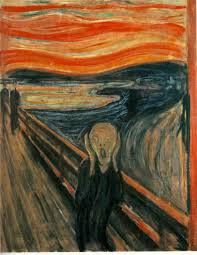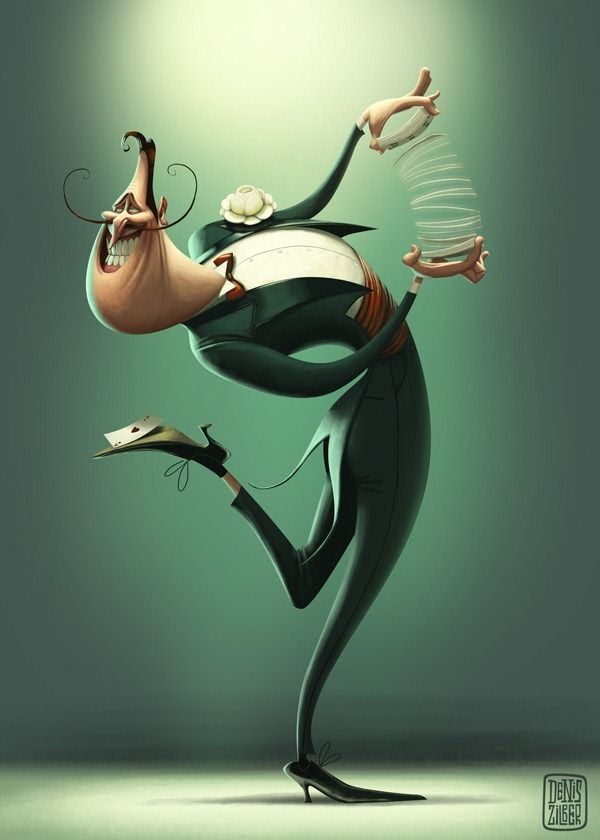Education - How to Hook
Like last month was endings, this month is all about beginnings; the start of your story. This is arguably the most important part of your story, because this is where readers decide whether or not to add your book to their library, or if you're published: whether or not to buy your book. Whether you write a prologue or not, the first few paragraphs need to be hooking. In this chapter we will look at how to do that.
Imagine a reader looking at your book. They've checked out the cover, read the blurb, and are now opening your book to page one. How do you make sure they stay? How do you make sure they read the first sentence, the first paragraph, and get so engrossed in the story that they just can't put it down?
That's what we're looking at in this January issue of Aspire. We need to start our books with an attention grabber. Something so intriguing, that the reader will have no choice but to keep reading. We need to start with a bang.
As with anything in creative writing, there are some tips and tricks for this. This article will describe those and give some examples. Do keep in mind however, that especially in creative writing, rules are meant to be broken. For example, while researching for this chapter we came across an author/critic who said, "It's annoying when the first sentence of a book is dialogue." This makes sense, because the reader doesn't know yet who's talking or why they should care about whomever is talking. But rules are meant to be broken. If you have written an amazing line of dialogue that you're sure will capture the reader's attention, don't be afraid to use it.

Tip #1: Let's have a look at those tips and tricks we mentioned. The first, and probably most important, one is to start the book/story at a pivotal moment. The inciting event is an event that gets the plot started. For example, in Star Wars the inciting event is when Luke Skywalker receives a message from Princess Leia. Begin your story near this point.
The inciting event always has to happen in chapter one. If it doesn't, that means the plot hasn't started yet, which means chapter one wasn't necessary for the story.
To decide on the "pivotal moment", have a look back at your planning of the story. Have a look at what you wrote first: what was it that got the plot started. If your story is a romance, the inciting event might be the main character finding out that her crush is moving away to the other side of the country. If your story is a fantasy, the inciting event might be the moment your hero receives their quest. This is what gets the plot started; this is what makes our MC take action and make tough decisions. This is interesting and makes the reader want to learn more. Had you started the book with a scene in which everything was still fine and dandy, readers wouldn't have been hooked in the first chapter, because there is nothing to draw them in (at least not plot-wise).

Tip #2: Start with an unusual situation. Unusual situations make readers ask questions. Questions are good, because they make the reader want to find out answers, which means they'll keep reading. (Note: there are good questions and bad questions. Good questions is when there's mystery; these keep the reader interested. Bad questions is when the scene is vague. Avoid this, because they will make the reader close the book and move on. We'll get back to this later.)
As an example, let's take a look at a fellow Wattpadder's story: Hunter's Shadow, by EmmaConnolly379. This book starts with a girl running for her life as she's chased through the forest. Add to that the hints at her being a werewolf and memory loss, and you've got yourself a very unusual, intriguing situation.
Creating unusual situations isn't limited to fantasy authors. Though it's arguably easier for fantasy writers, because their worlds are subject to the author's rules and laws, any genre can have unusual situations. You just need to be creative. Unusual situations exist just as well in our normal, magic-less world.

Tip #3: Make your readers wonder. This very much ties in with the previous one, and basically means: have them ask questions. Have them be intrigued by something, whether it's the setting, the characters, the inciting event, or something else entirely. Think carefully about what you want your readers to ask themselves and do something with that.
An example. Let's take a look at the start of The Hunger Games: "But today the black cinder streets are empty. Shutters on the squat gray houses are closed. The reaping isn't until two. May as well sleep in. If you can." (ch 1, p. 4) This little paragraph is intriguing for several reasons. The word "reaping" alone is already pretty scary and has you wonder what's going on. The two descriptive sentences before that and the very last ominous two words, add even more mood to this. All of this in totality has the reader wonder what the Reaping is exactly. Which means they'll read on to find out.

Tip #4: Use descriptive words to create an interesting picture. Paint a picture to set the mood of the story. Use the setting to convey the mood. For example, if the mood is meant to be gloomy, paint us a picture of a sun going down while it's raining in a quiet little town. If your story is light and fun, paint a picture of a girl frolicking in a field of flowers with the sun shining down on her. These examples are a little bit cliché, of course, but they do get the point across.
What's important to remember is that the mood of your MC has a huge influence on the descriptions of the world around them. For example, a depressed character might walk across a deserted beach noticing how empty it is, and how the setting sun is a metaphor for things going downhill in their life. At the same time, a couple might see that same setting sun as very romantic, with the deserted beach making the scene even more intimate. They'll have eyes for the beautiful things on the beach, while the depressed MC will have eyes for the broken sandcastle, the dead and half-eaten crab, the homeless person wandering the beach looking for anything useful.

Tip #5: Leave things a mystery. As mentioned before, there's a difference between being vague and being mysterious. It's all about leaving the right things out. What might help, is to remember that the scene needs to be crystal clear, while plot can be left open at this point.
It is important to be mysterious. Leave the reader hanging for a bit. Don't tell them everything they want to know all at once. Those questions you've just raised in them, they don't need answers yet. If they have no questions left, they won't have a reason to keep reading, after all! And besides, answering all those questions will very likely lead to an info dump.
What does need to be clear though, is the scene itself. Suzanne Collins raises questions about the reaping, but is very clear about Katniss' current situation in which she has to hunt and provide for her family.

Tip #6: Introduce an intriguing character. Miss Peregrine's Home for Peculiar Children by Ransom Riggs is a good example of this. This book starts with Jacob, who creates a replica of the Empire State Building from boxes of adult diapers, until he gets a phone call that his grandfather is in trouble. Within half a chapter we've learned that Jacob is a spoiled brat trying to get fired, but also that he loves his granddad and would drop everything to go and help him out, while the rest of his family does not. All in all an intriguing character.
Many authors here on Wattpad start their story with exposition, or scene setting. As you may have noticed, that doesn't quite rhyme with what this article has been describing. Does that mean we advise against starting with exposition? No, not necessarily. Some readers (and writers) love exposition. They love getting a feel for the scene and the world that is being created. They love the beautiful description, the flowery writing, the wonderful metaphors. The catch is that even exposition will need to raise some sort of question in the reader. It needs to make the reader go, "Hey, that's interesting. I wonder what that's all about". Because that is what will keep them reading, not your beautiful descriptions.
Fun fact: If you have decided to write a prologue, you have double the work when it comes to the hook. Why? Because you will need a proper hook in both the prologue and chapter one. The hook for the prologue only works for the duration of the prologue itself. The hook in chapter one will be the hook for the rest of the story.
As an example, take A Hufflepuff's Loyalty by HogwartsDungeons. The hook in the prologue is a girl being followed by a man who will eventually kidnap her. But once you get to chapter one, years have passed. Which means a reader won't have to care too much about that little kidnapped girl anymore. Which means the author needed a new hook for chapter one. In chapter one, the hook is that the MC is hiding in the wardrobe from the bad people who have invaded her home. A hook for both.
Remember that your hook needs to be strong, but also immediate. You often don't have a whole chapter to hook the reader. You have maybe the first few paragraphs. Within those first few paragraphs, you need to have reeled the reader in. After that, you need to make sure you keep their interest the whole way through. We'll come back to this in later issues. Cliffhangers, for example, are one of the tools to keep a reader's attention throughout.
We hope this article can help you structure the first chapter of your story. Let us know in the comments how your story hooks readers in.
Naomi - NDeMeer
Team Of Dreams

Bạn đang đọc truyện trên: Truyen247.Pro